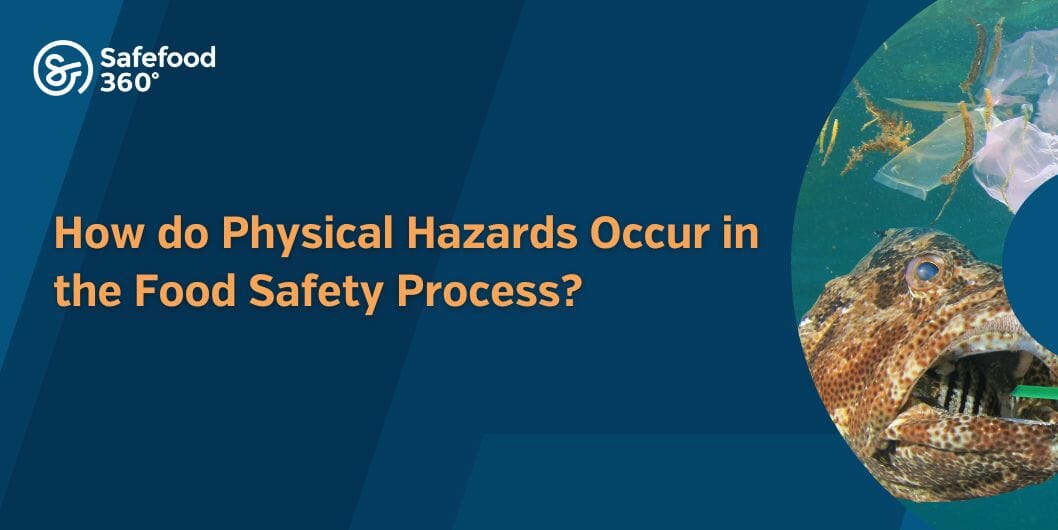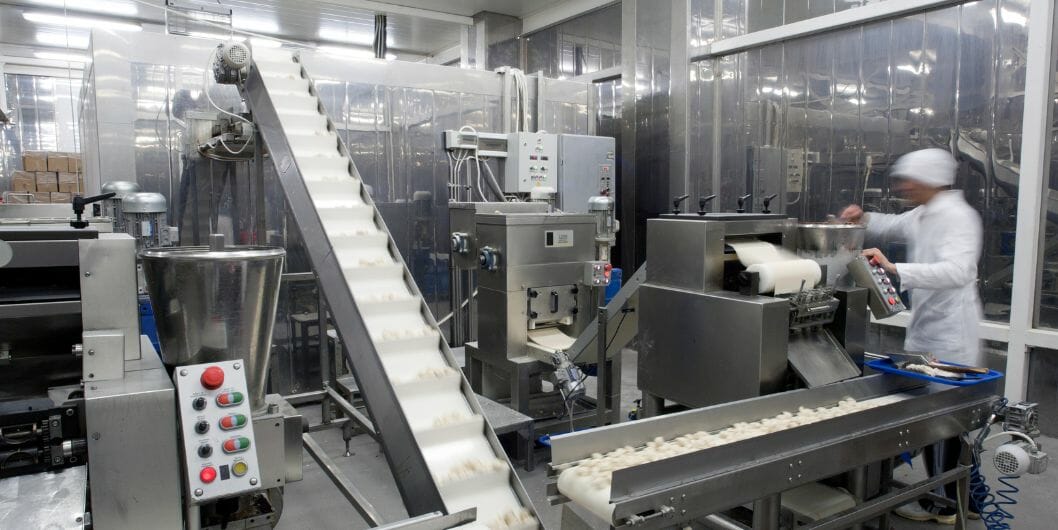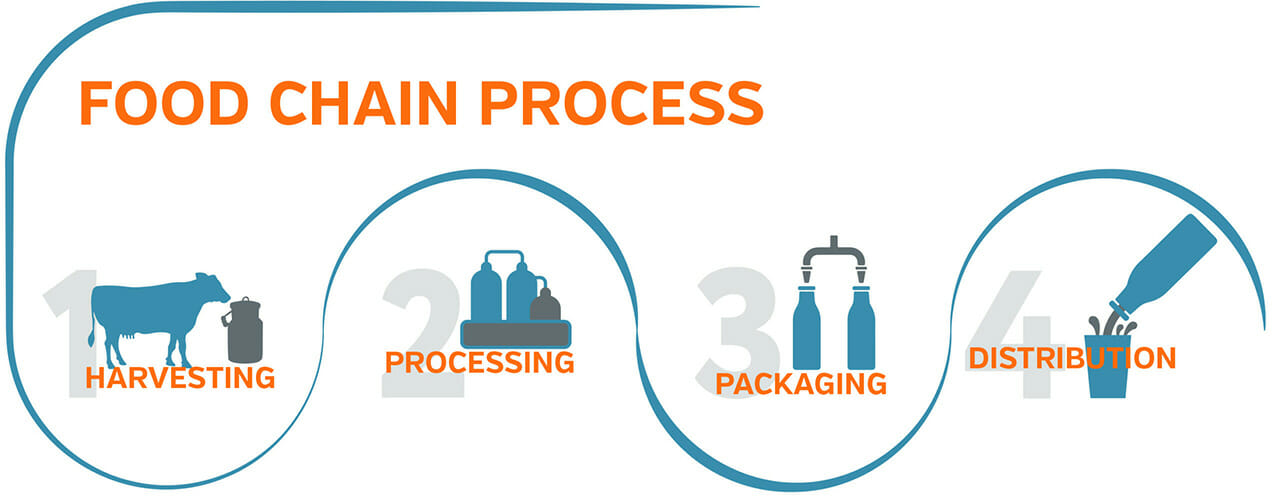How do Physical Hazards Occur in the Food Safety Process?
In the food manufacturing world, we come across the word hazard daily, one type being physical hazards. We strive to prevent these physical hazards (You can download specific physical hazards by category in our Datasheet) from entering our food chain and into our processes to ensure that we deliver products of the highest food safety and quality to our consumers. However, there are still many recalls worldwide due to physical hazards entering the food chain and potentially causing harm to consumers, such as cuts to the mouth, throat, or intestine, broken teeth or choking. We will delve further into how they can enter the food chain and how we can try and prevent this from happening.
What are the Physical Hazards in Food?
Physical hazards in food have often been defined as foreign objects or foreign materials present in foods and can vary in nature. They can either be defined as being naturally occurring in foods, also known as intrinsic, for example, bones or shells. We then have those unintentionally introduced to food like extrinsic hazards such as plastic, glass and metal, which more than likely get into the food through the food manufacturing processes.
According to the Food and Drug Administration, “Physical hazards are broadly classified as sharp hazards, choking hazards, and conditions of animal food hazards such as size and hardness. Injuries from physical hazards may include oral cavity damage (e.g., tooth damage or laceration of the mouth or throat), laceration or perforation of the gastrointestinal tract, and choking.”
This means there is a wide range of physical hazards that needs to be controlled, which is not always easy, but having the right procedures and processes in place will make it much easier to prevent these hazards from causing serious harm to our end consumer.
Common Physical Hazards: A Closer Look
| Physical Hazard | Source/Reason |
|---|---|
| Glass and Metal Pieces | Originates from broken or damaged equipment or machines at manufacturing facilities. |
| Plastic Fragments | Commonly found due to wide usage in all process stages, from utensils to packaging materials. |
| Bone and Shell Fragments | Natural components of meat, fish, poultry, and egg products. Must be carefully removed during processing. |
| Stones, Pebbles, Soil | Can enter food items such as fruits and vegetables, being part of their natural growing environment. |
| Pests and Insects | Can directly contaminate food, or introduce other hazards like feathers or droppings if proper sanitary procedures are not followed. |
| Jewellery and Personal Items | Can originate from employees involved in manufacturing. Companies need procedures to control items like jewellery, medication, or band-aids in the production area. |
Let’s investigate specific hazards and how they can enter the food chain.
Glass and Metal pieces or fragments are one of those physical hazards that can really cause the consumer serious health consequences. Glass and metal usually originate from a piece of equipment or machine that has been broken or damaged. In some cases, some food manufacturing facilities even ban glass from the site to prevent this hazard from getting into the product.
Plastic is a very common source of contamination as it is widely used in all process stages. Whether this be hard plastic from utensils or soft plastic from packaging materials, it can be very easy for this type of hazard to be present in food due to the various stages in the process it is used.
Bone and Shell fragments are natural components of meat, fish, poultry, and egg products. As they occur naturally in the food, the processing methods must remove these as best as possible to ensure nothing is left behind.
Stones, pebbles, soil, and other components of the natural environment can easily make their way into food items such as fruit and vegetables as they are part of the environment in which these sorts of foods grow.
Pests and insects themselves can be known as a physical hazards, for example, an insect found in salad leaves but not only this, these types of hazards can actually introduce other physical hazards such as feathers or droppings onto food items and packaging if the correct GMP and sanitary procedures are not adhered to.
Jewellery and personal items can originate from employees involved in the manufacturing process, whether this be items such as jewellery, medication, or band-aids. It is essential that all personnel are trained on personal hygiene procedures and that companies have procedures in place for employees who need to have medication or jewellery on site for medical purposes, and this needs to be controlled. Band-aids that have been given out should be counted and reconciled at the end of every day to make sure that none have reached their way into the finished product.
On our Datasheet page, you can access and download individual datasheets that provide information about the hazards mentioned.
How do Physical Hazards Occur in the Food Safety Process?
Physical hazards can occur at any stage in the food chain from harvesting, processing, packing and distribution. They are often the result of poor procedures and practices, inadequate adherence to procedures and environmental factors. In this next stage we will look and see how these hazards can make their way into the foods we eat.
If we look at the start of the food chain, farming and agriculture are up there when it comes to the origin of many physical hazards. Firstly, pests and insects live in the natural environment around us, and it is inevitable at times that they will creep into the food and end up on the consumer’s plate. Insects are commonly found on vegetables, for example, salad leaves and due to the nature of the product being leafy and layered, some insects can find hiding places. We have mentioned why leafy green always recalls and suggested what food businesses can do about it. Soil and sand are also another physical hazard that similarly to insects are naturally found on fruits and vegetables and it is important that if these products are being sold as ready to eat then they are washed, and any soil is removed prior to being put on the shelf for consumers. Last but not least, one of the most common physical hazards originating from the natural occurrence are bones or shells from meat, fish or egg products. These types of hazards are naturally occurring in these types of products so it is not always easy to make sure that these are 100% removed which is why in some cases companies even state on the labels of packaged products that “Although all care has been taken to remove bones some may remain”, this is evidently due to the fact that these are intrinsic to the product and unfortunately it cannot always be guaranteed that any process would remove these.
The next stage in the food chain is when food is delivered to manufacturing and processing facilities to go through specific processes to make them into the finished product. During this time, foods can go through such long and lengthy processes that there is many an opportunity for physical hazards to enter the products.
Let’s start with packaging materials, packaging is one physical hazard that is tricky to prevent from making its way into the food, this can happen if the packs of raw material are not opened or decanted correctly, and materials such as plastic can tear off and get mixed among the food.
As the manufacturing process moves on then food comes into contact with different types of equipment and utensils. In most cases these kinds of physical hazards would be metal or hard plastic from equipment, machines, utensils or even from personnel. This can happen if there is ware and tare over time and if equipment is not maintained correctly then this increases the risk of these types of foreign materials getting into foodstuff. Glass is also another very serious physical hazard that has potential to invade the consumers food, this can happen if glass gets damaged and if it is too close to open product areas the it can contaminate the food.
Personnel also contribute to foreign material issues, whether that be hair, false nails, PPE such as aprons or gloves or even band aids. This can be a common occurrence especially in those facilities where the manufacturing process is very hands on, for example, RTE sandwiches or salads where there is a lot of manual assembly and packing.
Once the product is packed then we may feel that the product is lower risk and that it cannot become contaminated which is relevant in some instances however, the product is not totally out of the woods yet as during the dispatch stage where there may be a lot of manual handling on trays and pallets it is not impossible for product packaging to get damaged during the storing, dispatch and transport of the goods. This in turn can mean there is still a slight chance that foreign material could end up on or in the product although less likely than during the manufacturing and processing stages.
Physical hazards are a frequent occurrence in the food production process. To avoid food recalls, implementing reliable software can greatly enhance efficiency and offer guidance to streamline your food production chain. If you’re interested in learning more, please send us a demo request, and we can discuss how to optimize your food business and eliminate physical hazards.
Physical Hazard Prevention: A Step-by-Step Guide
We have gone through the types of hazards and how they can into the food chain but let’s see now what preventive measures we can put in place to try and improve food safety and reduce the chance of this happening and how we can implement these as best as possible.
Let’s start again from the beginning of the food chain and see how we can put controls in place that may reduce the chance of food becoming contaminated with these physical hazards. Beginning at the farm or agriculture step, we need to make sure we implement Good Agricultural Practices. There should be regular pest control inspections and checks in place to make sure areas where products are stored are free from any rodent activity especially in farms and other areas of agriculture where these types of pests are more likely to exist. Harvesting and post-harvest handling is important also to check the product for any sign of physical hazards and to remove these as much as possible during quality checks. Correct irrigation techniques should also be used to make sure produce is washed or rinsed in different stages to remove any physical hazards especially those that are harder to see just using the eyes and those hazards such as insects that can make the produce their home.
European Union GMP Definition According to Commission Regulation (EC) No 2023/2006 good manufacturing practice for material and articles intended to come into contact with food, GMP is defined as “Those aspects of quality assurance that ensure materials and articles conform to quality standards, do not endanger human health or cause an unacceptable change in the composition of the food.”
Good Manufacturing Practices is a major component of preventing physical hazard contamination during the production process, without it there would be many more food recalls and no doubt consumer health consequences. GMP covers a wide range of practices from conducting inspections and checks, training employees, personal hygiene practices and many more. It is essential that GMP is implemented in any food manufacturing facility and that all aspects are trained out to employees and that the procedures are adhered to. Conducting a hazard analysis as part of your food safety plan will help identify where you can put GMP measures in place. For example, you may want to conduct a preoperational inspection every morning to make sure that all equipment such as conveyor belts are free from any foreign material, and this should be checked by a trained employee and verified by QA to make sure it is being done.
In addition to having these GMP checks in place a lot of manufacturing facilities put in place systems such as sieves or filters to be used during the manufacturing process. Some may have automatic detecting systems such as metal detectors or x-rays in order to detect foreign material in finished product. It is important with equipment such as metal detectors that the test pieces used are adequate to detect potential metal within your type of product. Testing is usually conducted at the beginning of production, every hour, after any maintenance or rejects and at the end of production. It usually is also verified by QA if it is a CCP, and they may even do their own daily check to make sure it is up to scratch to detect any foreign bodies present.
This brings us to think about maintenance, maintenance is a critical part of preventing physical hazards, there should be a preventive maintenance schedule in place to ensure that all equipment is maintained in good condition, and this should be done at a set frequency by the maintenance team. Sanitation is also another key element, it is essential for all types of hazards, and this is no different for physical hazards, it is key that sanitation processes are in place and that facilities are cleaned and sanitized to the highest standard to remove any potential hazards and to leave the production and other departments ready for a busy day of producing safe food.
GMP can be covered all over the facility from start to finish and this leads on to Good Distribution Practices. When the packaged good is being stored before being shipped to the consumer it is important that the storage conditions are clean, tidy, and free from any damage as if not this could affect or damage the product. Thinking of this you may think that if the product is packed there is no need to adhere to these practices just as much as in an open product area, but it is essential that these are followed right through from start to finish to avoid any complaints or serious consequences to the consumer’s health.
Overall, I think it is safe to say that physical hazards play a huge part in food recalls and can have serious consequences if they are not controlled. Due to the wide variety of physical hazards present out there in the food manufacturing environment it is necessary to really think through the product, the process and what hazards could occur and how we can prevent them. Doing this can make us one step closer to helping put the best interest of our consumers at heart.
Safefood 360° is an innovative software designed by food experts, and it is dedicated to food manufacturers to work for a safer world. Subscribe to our newsletter for the latest food safety news. If you would like to have more details about how to ensure the food safety of your company, submit a demo request here.






Leave a Reply
Want to join the discussion?Feel free to contribute!